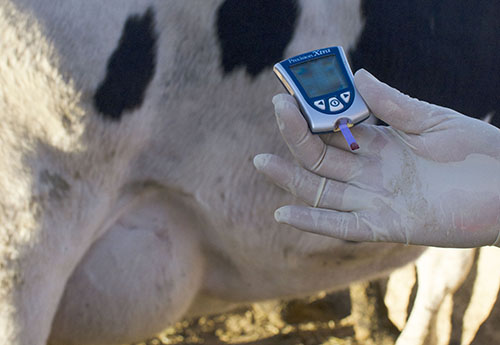
For cows transitioning from dry period to lactation, ketosis is one of the most prevalent metabolic disorders as it causes reduced feed intake, depressed milk production, weight loss and susceptibility to other health events. According to Jessica McArt, Cornell researcher and professor, many ketotic cows never show clinical signs.
"Somewhere between 80 and 90 percent of ketotic animals actually show no clinical signs," she said during a recent DAIReXNET webinar.
Research conducted at Cornell University revealed 40 percent of herds likely have more than 15 percent prevalence of ketosis. That means a significant herd health concern and economic impact. McArt said animals in these herds would regularly benefit from ketosis monitoring and treatment.
McArt suggests using a cowside blood BHB meter to calculate the prevalence of ketosis in a herd by taking BHB samples on 20 fresh cows between three and 14 days in milk. A BHB reading of 1.2 or higher indicates ketosis, while a reading of 3.0 or higher is classified as having a severe case of ketosis. McArt recommended any farm registering more than 15 percent prevalence of ketosis should consider individual cow evaluation and treatment.
For cows registering a blood BHB above 1.2, McArt suggests a treatment program that includes 300 milliliters of propylene glycol given orally and vitamin B, both administered once per day for five days.
"When you do the math behind the treatments, it's well worth it," she said.
For more information about fresh cow tests, read "Transition health markers are not interchangeable" on page 45 of the January 25, 2016, issue of Hoard's Dairyman.
(c) Hoard's Dairyman Intel 2016
February 1, 2016








